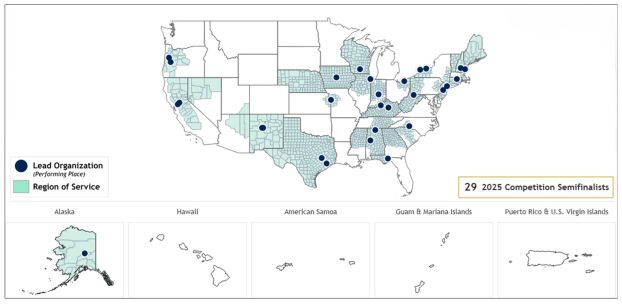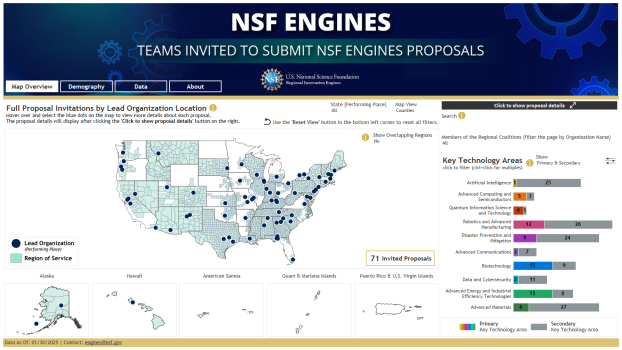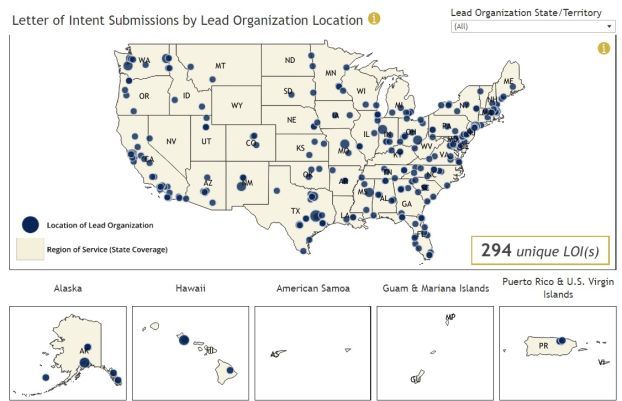NSF Engines Semifinalists
The U.S. National Science Foundation Regional Innovation Engines (NSF Engines) program is catalyzing and scaling regional-scale innovation ecosystems across America. In July 2025, the NSF Engines program announced the 29 semifinalists advancing to the next stage of the second competition, spanning critical technologies and applications ranging from energy grid security to maximizing the yield of critical minerals mining to advanced optical sensors.


Preliminary proposals
In November 2024, the NSF Engines program announced the 71 teams that were selected to move to the next round of the second competition and published data on over 1,600 distinct organizations that came together to form the 71 teams.

Letters of Intent
To apply for the NSF Engines program under the 2024 funding opportunity, organizations were required to submit a letter of intent (LOI) with information on the overarching challenge their NSF Engine aims to address and their key technology areas, partners and geographic footprints. NSF has published nearly 300 LOIs.

Why did NSF publish data from LOIs and preliminary proposals?
Encouraging place-based innovation and investment
The NSF Engines program required applicant teams to define their geographic region of service and lead their application submission with that information. LOI and proposal submitters should know about and connect with others within their regions and topic areas.
Unlocking new partnerships
The NSF Engines program garners interest from various organizations that may not naturally be connected. Nonprofits, foundations, investors, state and local government officials, tribal governments and community organizations have all expressed interest in connecting with NSF Engines. By publishing data from LOIs and preliminary proposals, NSF aims to create opportunities across the U.S. for like-minded groups to connect with submitters (within one's community and beyond) to offer ideas, capital, expertise and more. The agency hopes this process leads to stronger teams with a more diverse set of partners.
Power in the data
As a leading science and technology agency, NSF believes in the power of transparently sharing data. Given other federal and state government efforts to build regional ecosystems and capacity, NSF saw the value in sharing data early rather than waiting until awards are made. The agency encourages you to build tools and visualizations on top of its data.

